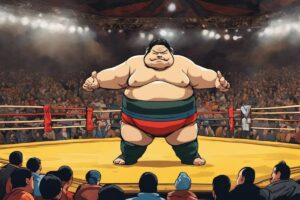Yumi bow and longbow are traditional weapons built by the ancient people to serve different purposes.
The Japanese built the Yumi bow, while the English people built the longbow.
Both bows are created with unique characteristics to make the weapon more effective while in use.
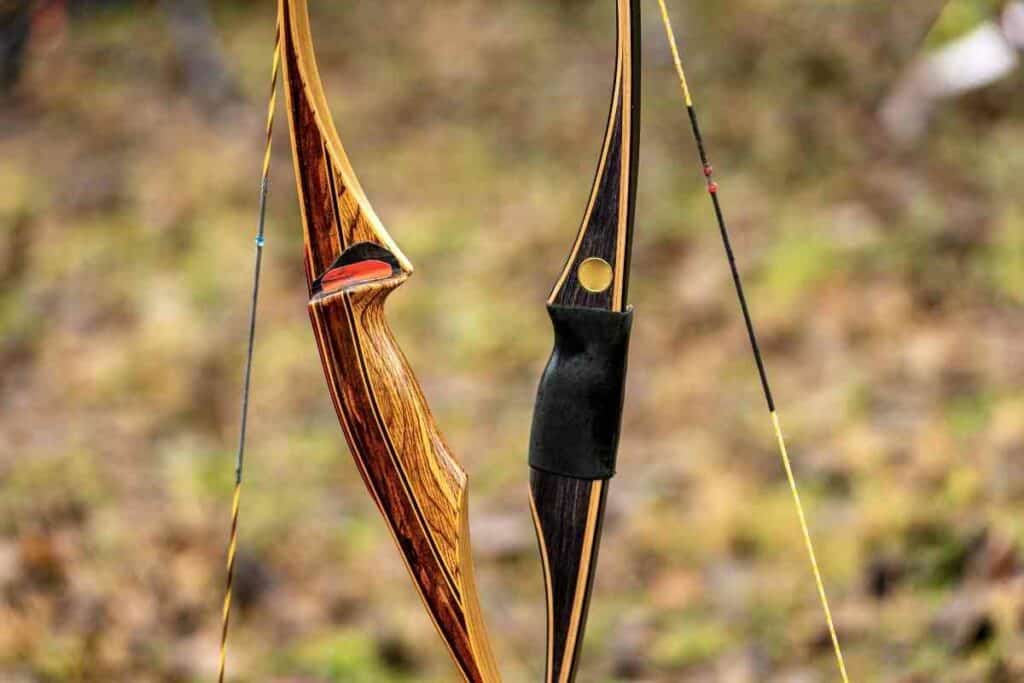
They are built with similar or different characteristics based on the bow’s weight, the draw weight, length, shape, and price.
The Yumi bow was first documented in the 3rd century and evolved gradually up to the seventieth century into a modern Yumi.
The longbow spread after the Norman invaded in the eleventh century. From then, the weapons keep spreading worldwide up to today.
Table of Contents
What Is a Yumi Bow?
The Yumi bow was made traditionally using wood, leather, and laminated bamboo in the 10th century.
The Yumi is a tall curved asymmetrical bow.
The grip is about one-third from the bottom tip, and the upper and lower both have different shapes. They are known to be taller than the owner or person using them.
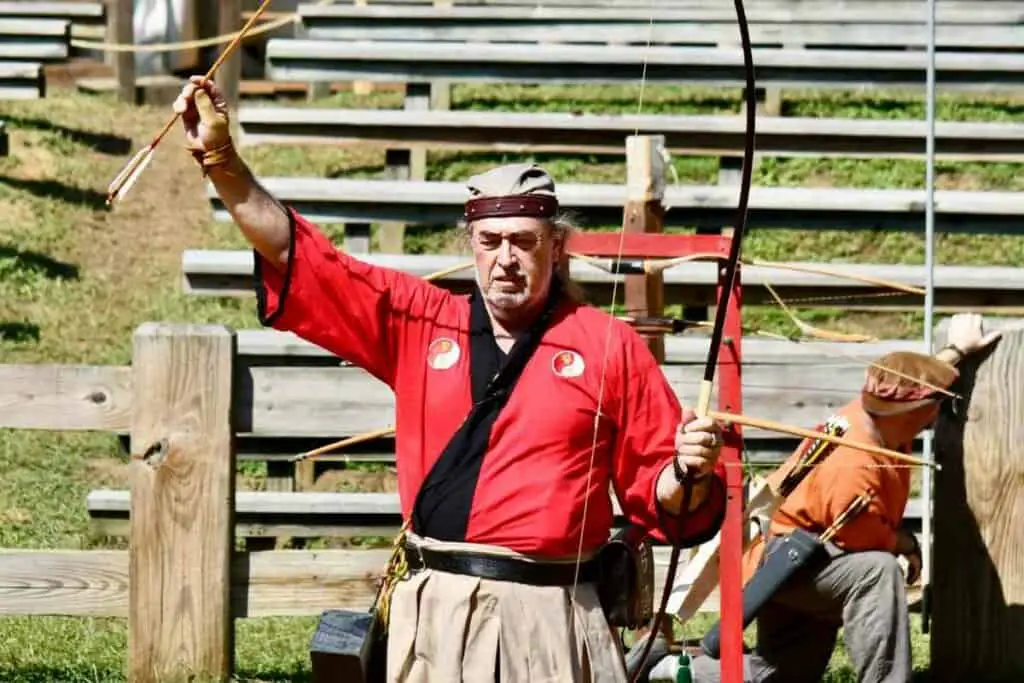
An average Yumi can shoot between five hundred to seven hundred feet or a range of two hundred meters.
This is determined by the weight of the arrows being used and the user’s experience. A heavy arrow will cover more distance compared to a light arrow.
Also Important – The Yumi bows were made tall because longer bows draw and shoot smoother compared to shorter ones. The longer bows also bend less at full draw than shorter ones, making them less likely to break.
The asymmetrical shape contributes to a more incredible draw creating more length for release power. The Yumi bow was built to be used when knelt or on the back of a horse. The low short limb is to provide a good clearance while shooting.
Fun Fact: The Yumi bow is quite expensive as it cost over $2000 despite being an ancient weapon.
Booking.com
What Is a Longbow?
A Longbow is a strong, large, and stiff weapon made from dried yew wood.
In the early days, it took about four years to build, from the drying to the curving of the wood. The English made them for hunting and as a weapon against the French army.
To be durable, they coated them with:
- wax
- resin
- and good grease to act as water-resistant
One of the most distinguishing features of the longbow is its D-shape. It has a slight curve of about six feet long.

The bows also come in various draw weights since they are harder to draw. If you are not used to a longbow, you should purchase a longbow with a draw weight of less than 15lbs.
The length of the bow ranges from 1.2 to 1.8 meters, depending on the user’s preference. It is made long to allow the user to have a compelling draw.
The string is made from silk, hemp, or silk and attached to the wood through the horn.
Keep In Mind – The weapon’s range is not accurately known since it depends on the bow’s strength, the weight of the arrow, and how skilled the user is.
A light arrow ranges around three hundred and seventy meters, while heavy arrows range a distance of two hundred meters.
What Are The Differences Between The Yumi Bow And Longbow?
| Yumi Bow | Longbow |
|---|---|
| Made from bamboo | Made from yew wood or elm |
| Used for by the samurai | Used by the masses |
| About 2 meters in length | Around 1.5 meters in length |
| The draw weight of 50 pounds | The draw weight of 100 pounds |
| Cost over $2000 | Cost approximately $500 |
| Weigh about 25lbs | Weight about 65lbs |
Material: The two bows differ greatly in the materials used to construct them. Yumi bow was traditionally built from bamboo, while the English made the longbow from dried elm and yew wood.
Use: Longbow was commonly used by the masses, while the samurai used the Yumi bow.
Length: The longbow is shorter than a Yumi bow and has a shorter draw.
Shape: The Yumi bow is more curved compared to the longbow. The longbow is D-shaped, while the Yumi bow is asymmetrical.
Dimensions: the average longbow length is 2 meters, while the Yumi is around 2.5 meters in length.
Draw weight: The draw weight of an English longbow is more than 100 pounds, while the Yumi is around the thirty to the forty-pound range.
Price: The longbow is cheaper compared to the Yumi bow. The Yumi costs over two thousand dollars, while the longbow cost approximately three hundred to seven hundred dollars.
Weight: The longbow is heavier compared to the Yumi bow. The longbow weighs around 60lbs, while the Yumi bow weighs about 25lbs.
What Are The Similarities Between The Yumi Bow And Longbow?
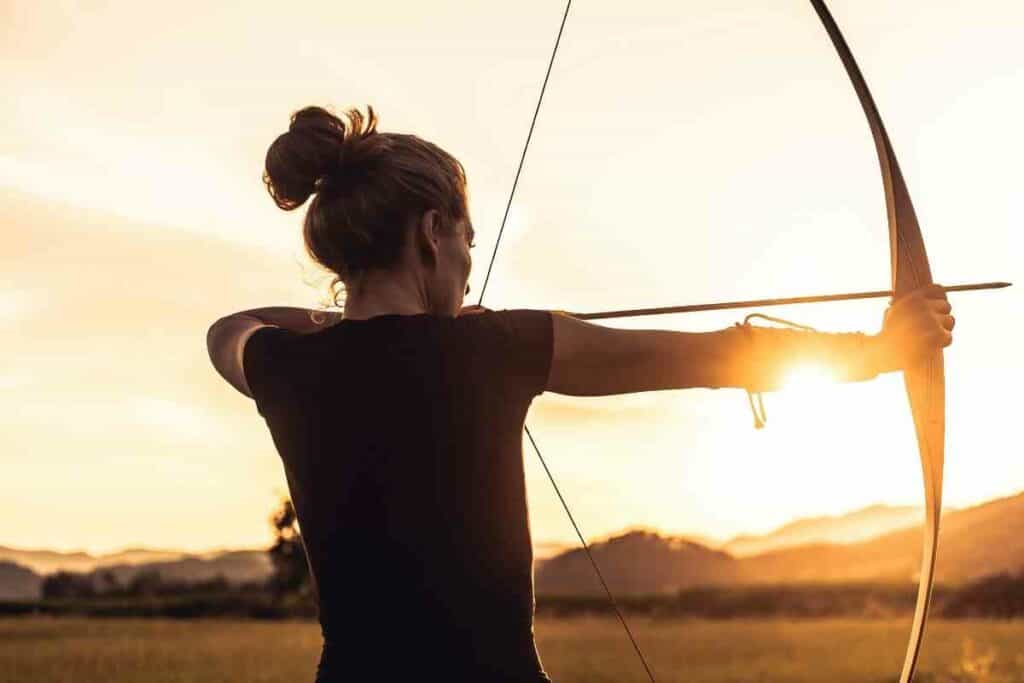
While the Yumi Bow and the Longbow are two completely different weapons, they do have some common features.
For example:
- Both bows are longer than ordinary bows. They measure at least 1.5 meters.
- One could have used the two bows for the same duration since they were built in the 10th century.
- Both bows can serve the same purposes, such as hunting and as weapons against their enemies.
- They were both made from curved wood in ancient times.
Why Do People Prefer The Yumi Bow Compared To The Longbow?
People prefer the Yumi bow since is lighter than the longbow.
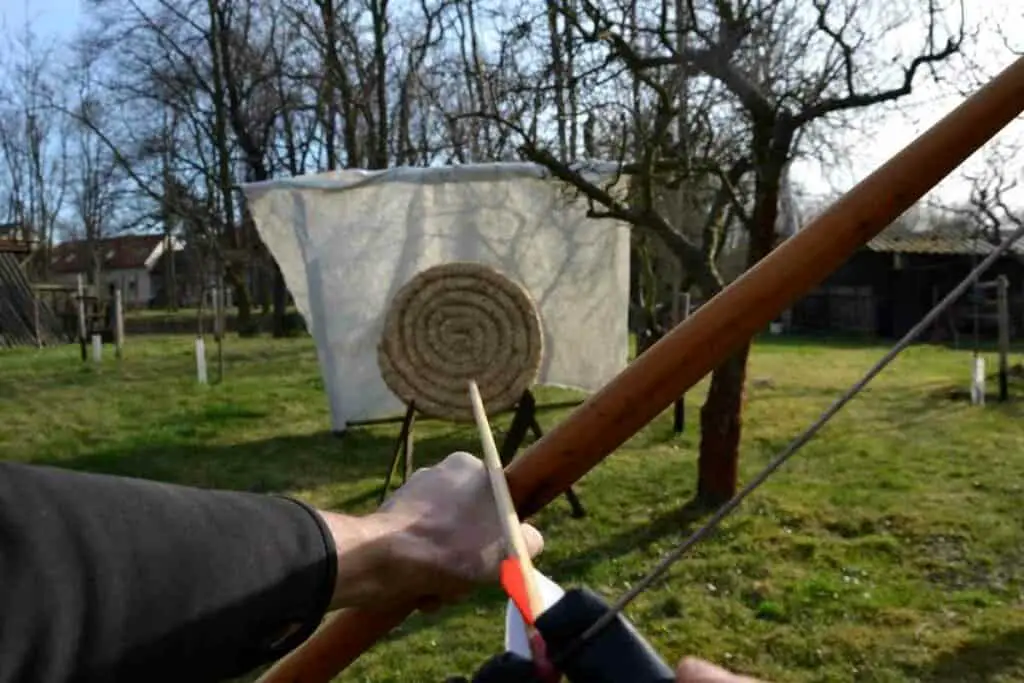
A light weapon is easier to carry even in longer journeys than a heavy one. This also makes it easier to use.
Additionally – The longbow recoil can shake your arm when you let the arrow loose since they don’t have a curvy design to absorb the shock.
Also, since the bow is tall, the tilt made to adjust the angle allows a firmer grip and gives the archer good control of the weapon.
The unique shape of the Yumi bow gives it the advantage of firing from the back of a horse.
However, the longbow uses fewer materials compared to the Yumi bow. It is only made from sap and heartwood of the yew.
Final Thoughts
In the ancient days, bows were made as weapons and for hunting, but in the modern days, people have incorporated in other activities such as sports and leisure.
Read Next ?
The Yumi bow and the longbow had different characteristics.
However, both bows are of great quality, making them effective weapons. Thus the choice between, either boils down to preference.
Also Read
- The Forbidden Japanese Island That Will Give You Nightmares
- Miss Japan Forced to Wear Sailor Moon Costume Since Childhood: Claims It’s the Secret to Her Success
- Essential Guide to Japan VPN: Secure Access and Privacy for Travelers
- Sumo Wrestler Suit for Adults by TOLOCO: Best Sumo Suit?
- Eki Stamp Book (Gotta Collect Them All!)
- Explore the Fascinating World of Japanese Rubik’s Cubes




